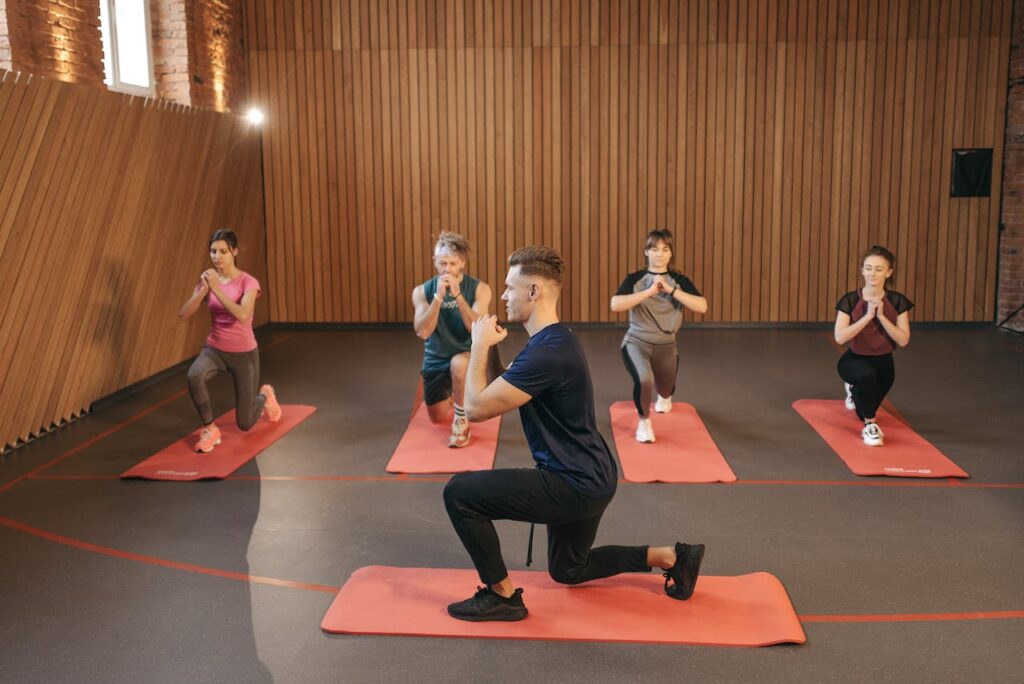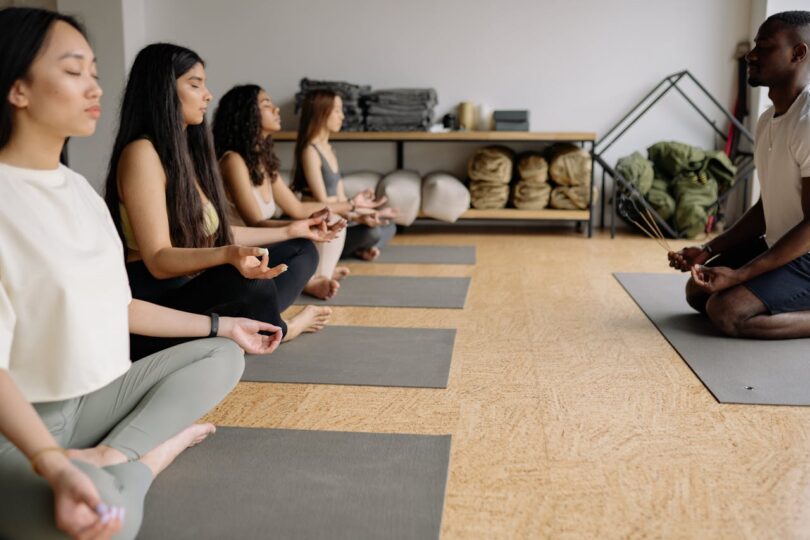Table of Contents
Introduction
Yoga, an ancient practice rooted in over 5000 years of Indian tradition, has become a global phenomenon thanks to its profound benefits on mental, physical, and spiritual health. With the advent of digital platforms, free online yoga classes have made this holistic practice accessible to a broad audience. Let’s explore how these platforms work and how you can benefit from them.
What are Free Online Yoga Classes?
Online yoga classes are instructional sessions conducted via the Internet, often at no cost. They range from beginner to advanced levels and offer a variety of styles, such as Hatha, Vinyasa, and Kundalini.
Benefits of Practicing Yoga Online
The primary allure of online yoga is convenience. Participants can join classes from anywhere, tailor their schedules, and choose their preferred style and pace. This flexibility makes it easier to maintain a consistent practice.
Finding the Right Online Yoga Class
To find a class that suits your needs, consider the teacher’s qualifications, the style of yoga, and the class intensity. Websites with user reviews can provide insights into the classes’ quality.
Famous Platforms for Free Online Yoga
YouTube is a treasure trove of free yoga content, with channels dedicated to yoga instruction. Websites like DoYogaWithMe and apps like Down Dog provide well-structured classes for beginners and experienced practitioners.
Tips for Maximizing the Online Yoga Experience
Create a peaceful space in your home where you can practice without interruptions. Sticking to a regular schedule helps build a routine, and trying different styles keeps the practice enjoyable.
Challenges of Online Yoga Classes
Without a teacher physically present, students may miss out on personalized adjustments and find staying motivated challenging.
Yoga for Specific Needs
Online yoga can cater to specific needs such as stress relief, physical strengthening, or spiritual meditation, with sessions often designed around these themes.
How to Integrate Yoga into Your Daily Routine
Integrating yoga into your daily routine can be a beneficial way to enhance your physical health, mental clarity, and overall well-being. Here are some practical steps to incorporate yoga into your day:
- Set Realistic Goals: Begin by setting achievable goals. Decide how many days a week you can commit to practicing yoga, whether every day or a few times a week.
- Choose the Right Time: Identify a time of day that suits your schedule and energy levels. Many prefer early morning sessions to start their day with increased energy and focus, but others might find a lunchtime or evening practice more practical.
- Create a Comfortable Space: Designate a specific area in your home as your yoga space. It doesn’t need to be large, but it should be clean, quiet, and free from distractions. A comfortable mat and optional props like blocks or a blanket can also help.
- Begin with Short Sessions: If you’re new to yoga or have limited time, start with 10-15 minutes per session. Gradually increase the duration as you become more comfortable with the practice.
- Use Online Resources: Numerous online resources offer guided sessions for all levels, from YouTube tutorials to subscription-based apps. These can help you practice anytime, especially if you can’t attend a live class.
- Incorporate Different Styles: Yoga has many styles, such as Hatha for slower, more controlled movements or Vinyasa for a more dynamic flow. Experiment with different styles to keep your practice interesting and balanced.
- Stay Consistent: Consistency is critical. Try to stick to your yoga schedule as closely as possible and make it a non-negotiable part of your daily routine.
- Listen to Your Body: Pay attention to your body’s needs and limitations. Yoga should not be painful. If you feel discomfort or pain, adjust your poses or reduce the intensity of your practice.
- Mindfulness and Meditation: Yoga is not just physical exercise; it also involves mindfulness and meditation. Try incorporating these elements into your sessions to enhance mental relaxation and concentration.
- Reflect and Adapt: Regularly reflect on your yoga journey. Notice any changes in your body and mind, and adjust your practice to keep it beneficial and enjoyable.
Safety Tips for Practicing Yoga at Home
Practicing yoga at home can be a rewarding experience that promotes physical health, mental clarity, and emotional balance. To ensure a safe and effective practice, consider the following safety tips:
- Create a Safe Space: Ensure your practice area is clutter-free and has enough space to move freely in all directions. A flat, stable surface is crucial to maintain balance and prevent injuries.
- Use Proper Equipment: Invest in a good quality yoga mat to provide cushioning and grip. Consider additional props like blocks, straps, or a blanket to support your body and enhance your poses.
- Warm-Up: Always start with a warm-up to gradually increase your heart rate and loosen your joints and muscles. This can help prevent strains and injuries.
- Listen to Your Body: Listen to your body’s signals, and do not push into pain. Respect your body’s limits and modify poses as needed.
- Maintain Proper Form: Focus on aligning your body correctly in each pose. If unsure about your form, consult online tutorials or books by reputable instructors. Proper alignment is critical to avoiding injuries.
- Stay Hydrated: Keep water nearby and stay hydrated throughout your practice, especially if you are engaging in a more vigorous or heated style of yoga.
- Avoid Distractions: Turn off your phone and eliminate other distractions to maintain focus and balance during your practice.
- Practice Regularly But Gradually: Slowly increase the duration and complexity of your practice over time to build strength and flexibility without overexertion.
- Cool Down and Reflect: End your session with a cool-down period to bring your body back to a restful state and reflect on your practice. This helps in muscle recovery and stress relief.
- Seek Professional Guidance When Necessary: If you are new to yoga or have specific health concerns, consider consulting a yoga instructor for personalized guidance and modifications to suit your needs.
Advanced Yoga Practices Online
Advanced courses are available for those looking to deepen their practice. These often include more complex poses and philosophical teachings.

Resources for Further Learning
Numerous books and online resources offer deeper insights into the different aspects of yoga.
Testimonials and Success Stories
Hearing from others who have benefited from practicing yoga can be motivating and inspiring.
Conclusion
Whether you want to improve your physical health, relieve stress, or explore spiritual growth, free online yoga classes offer a valuable resource. Give it a try and see how it can transform your life.
Related Article: Yoga Poses to Lose Weight







